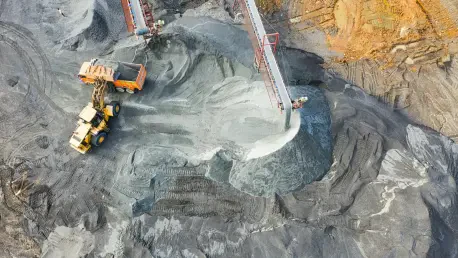In a bold move to rejuvenate the coal industry in West Virginia, a substantial federal investment of $625 million has been announced to support coal-fired power plants and related initiatives, sparking both enthusiasm and concern among stakeholders. This significant financial commitment, unveiled during a high-profile event at the state Capitol in Charleston, aims to bolster an industry that has long been a cornerstone of the region’s economy. While many view this as a critical lifeline for local jobs and energy security, others question the broader implications of funneling taxpayer money into a sector facing modern challenges. The debate centers on balancing economic revitalization with the potential burden on consumers, highlighting a deep divide in perspectives. As energy demands surge with advancements in technology, such as artificial intelligence and data centers, the stakes are higher than ever. This development has ignited discussions about the future of energy policy and who truly benefits from such substantial federal support.
Industry Support and Energy Demands
The announcement of the $625 million federal investment has been met with resounding approval from Republican lawmakers and coal industry leaders in West Virginia, who see it as a vital opportunity to strengthen a struggling sector. Leaders like Chris Hamilton, president of the West Virginia Coal Association, have emphasized the need for swift action to ensure the funds are utilized effectively to sustain coal-fired power plants. These facilities are deemed essential for meeting the escalating energy requirements driven by technological innovations, particularly in data-heavy industries. Supporters argue that maintaining these plants is not just a local concern but a national priority, as they contribute to the stability of the electric grid, especially in the PJM Interconnection region. Republican Senator Chris Rose has cautioned that without such support, plant closures could lead to severe disruptions, potentially causing electricity costs to skyrocket for residents, particularly impacting vulnerable groups like the elderly during peak demand times.
Consumer Concerns and Policy Questions
On the other side of the debate, critics have raised significant concerns about the implications of this federal funding for West Virginia’s ratepayers, questioning whether the benefits will trickle down to consumers or remain confined to industry stakeholders. Emmett Pepper from Energy Efficient West Virginia has pointed out that the focus on subsidizing coal companies with taxpayer money may not address the persistent issue of rising electric bills for households. Instead, there is a push for policies that prioritize cost reduction for customers over financial relief for private entities. The skepticism extends to the cost-effectiveness of the initiative, with fears that the burden of increased electricity costs could disproportionately affect those least able to afford it. Meanwhile, challenges within specific coal segments, such as metallurgical coal used in steel-making, add another layer of complexity, as producers face fierce global competition and trade pressures, prompting calls for additional measures like tax breaks to maintain competitiveness. This polarized landscape underscores a critical moment for energy policy, as past decisions are weighed against future affordability and equity for all involved.









